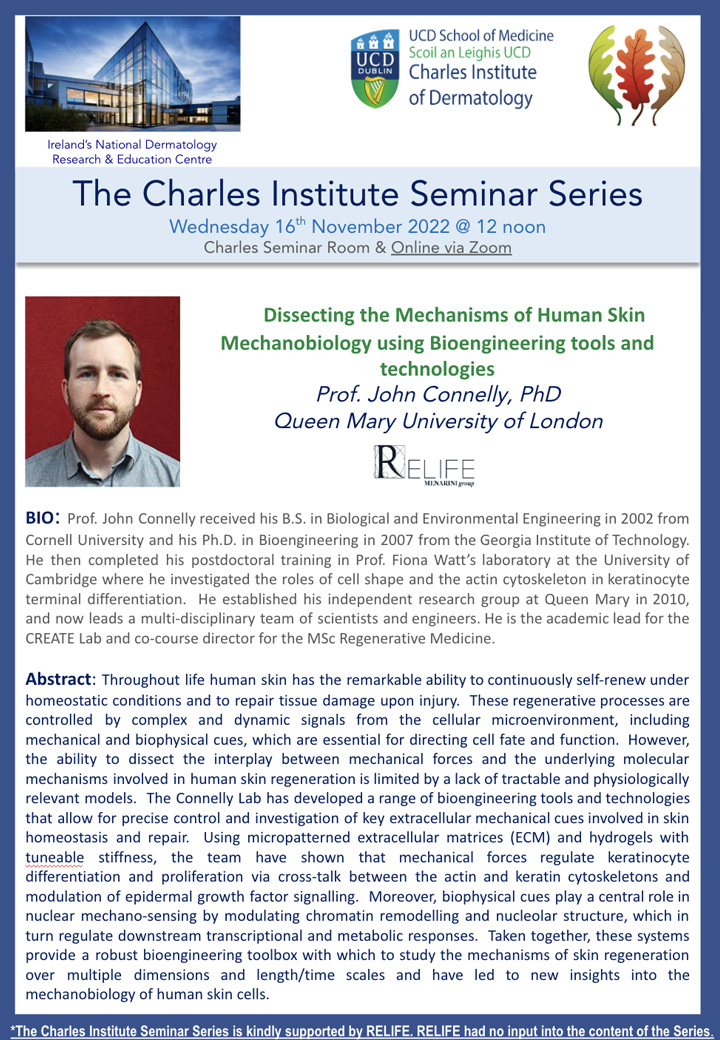Charles Institute Seminar Series 2022-23: Dissecting the Mechanisms of Human Skin Mechanobiology using Bioengineering tools and technologies with Guest Speaker Prof. John Connelly
Date of Talk: Wednesday 16th November 2022 @ 12 noon
Location: Charles Seminar Room / Online Via Zoom
Talk Title: Dissecting the Mechanisms of Human Skin Mechanobiology using Bioengineering tools and technologies
Speaker Details: Prof. John Connelly, PhD
Queen Mary University of London
Short Biography: Prof. John Connelly received his B.S. in Biological and Environmental Engineering in 2002 from Cornell University and his Ph.D. in Bioengineering in 2007 from the Georgia Institute of Technology. He then completed his postdoctoral training in Prof. Fiona Watt’s laboratory at the University of Cambridge where he investigated the roles of cell shape and the actin cytoskeleton in keratinocyte terminal differentiation. He established his independent research group at Queen Mary in 2010, and now leads a multi-disciplinary team of scientists and engineers. He is the academic lead for the CREATE Lab and co-course director for the MSc Regenerative Medicine.
Abstract for talk: Throughout life human skin has the remarkable ability to continuously self-renew under homeostatic conditions and to repair tissue damage upon injury. These regenerative processes are controlled by complex and dynamic signals from the cellular microenvironment, including mechanical and biophysical cues, which are essential for directing cell fate and function. However, the ability to dissect the interplay between mechanical forces and the underlying molecular mechanisms involved in human skin regeneration is limited by a lack of tractable and physiologically relevant models. The Connelly Lab has developed a range of bioengineering tools and technologies that allow for precise control and investigation of key extracellular mechanical cues involved in skin homeostasis and repair. Using micropatterned extracellular matrices (ECM) and hydrogels with tuneable stiffness, the team have shown that mechanical forces regulate keratinocyte differentiation and proliferation via cross-talk between the actin and keratin cytoskeletons and modulation of epidermal growth factor signalling. Moreover, biophysical cues play a central role in nuclear mechano-sensing by modulating chromatin remodelling and nucleolar structure, which in turn regulate downstream transcriptional and metabolic responses. Taken together, these systems provide a robust bioengineering toolbox with which to study the mechanisms of skin regeneration over multiple dimensions and length/time scales and have led to new insights into the mechanobiology of human skin cells.
